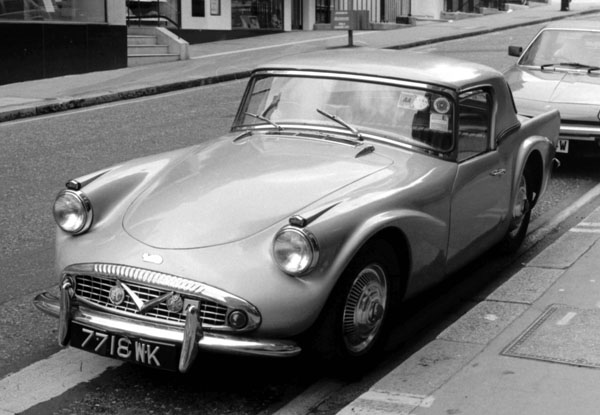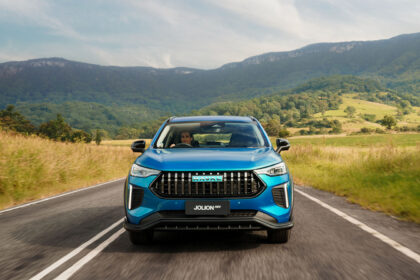
Daimler was a company with no tradition of sports cars so the SP250 “Dart” was something completely new for them to consider. Previously its one and only sporty car had been the Conquest Roadster of the mid-50s, which had much less performance.
The decision to build it came after a change of management in the late 1950s; Daimler was in trouble and the senior management thought a new sports car would be a fine way to woo American buyers, just as Jaguar, Triumph and MG had done before them. Using a chassis and suspension layout hastily copied from the Triumph TR3, Daimler took the then radical step of adding a fibreglass body with awkwardly styled but fashionable rear fins, a wide drooping grille and pop-eyed headlights which found few admirers.
Its major redeeming feature was its engine, a 2548 cc V8 producing a sweet 105kW. It was designed by Daimler’s managing director Edward Turner – famed for his Triumph motorcycle engines. This smooth and flexible free-revving engine with its hemispherical combustion chambers and twin SU carburettors had loads of torque and could easily power the unlovely but fairly light SP250 to 201km/h.
Its acceleration, 0-96km/h in 9.5 seconds, was not to be sniffed at either, yet the excellence of the performance and the fine, throaty V8 seemed somehow at odds with the amateurish, hastily designed body and chassis. The critics said as much, but as a niche filler between the cheaper TR and MGs and Jaguar’s big XK150, the Daimler SP250 did make a certain amount of sense, especially as it had good fuel economy.
Four-wheel Dunlop disc brakes meant that it stopped well too, but its handling never earned top ranking as the steering was heavy and the chassis somewhat whippy. The fibreglass body lacked rigidity and doors on early models – up to 1961 – would pop open alarmingly on rough roads. “B” specification SP250s – the Dart name had to be dropped because Dodge owned the name registration – had a stiffer chassis and bumpers as standard, while “C” cars had a few extra luxury touches.
The fate of the SP250 was sealed as early as 1960 when Jaguar took over the ailing Daimler concern to boost its production capacity. Sir William Lyons never liked the Dart, not only because the styling offended him, but also because it would have been seen as low-level competition for the E-Type. Jaguar made a half-hearted attempt to restyle the car, but it was never really on and Lyons pulled the plug with no regrets in 1964. He was bright enough to see the potential in the SP250’s excellent engine, however, and since 1962 had been offering it in a highly successful Daimlerized version of the MkII called the 2.5-litre V8.
Today the many flaws of the unhappy Daimler SP250 are seen as full of period character, and survivors are highly prized.








